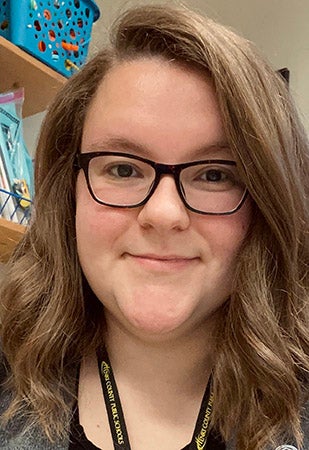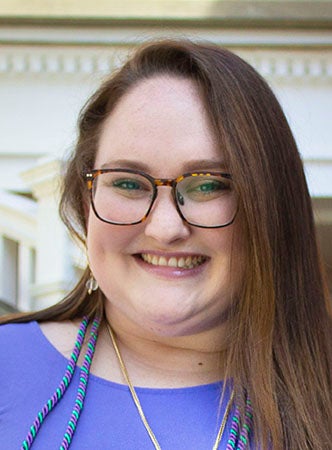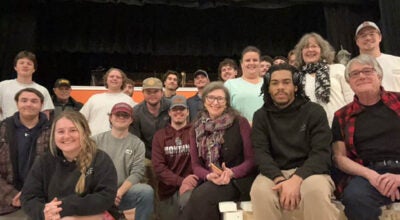Student teachers rise to the challenge
Published 6:00 am Wednesday, December 30, 2020
|
Getting your Trinity Audio player ready...
|
Allison Wright Pace is a great example of what student teachers — and their veteran counterparts — have been dealing with this year.
“When I started on Sept. 8, teachers were at school, but students were at home in a fully virtual learning format,” Pace, who is teaching third grade this fall at G.W. Carver Elementary School in Martinsville, said. “On Oct. 12, we began a hybrid model in which parents and students could choose whether to learn in person or remain virtual. During this model, our AA group of students came to school on Mondays and Tuesdays, and our BB group came on Wednesdays and Thursdays. All students were still virtual on Fridays. On Nov. 9, students returned to a fully virtual format, which will continue until Jan. 19, 2021.”
That’s a dizzying amount of change in just one semester even for experienced teachers, some of whom feel so overwhelmed that they’re choosing to leave the profession.
FIGURING IT OUT
But novice teachers at Longwood who are doing their student teaching this semester have met the challenges of the pandemic head on with the help of the Office of Teacher Preparation—and they’re learning some valuable lessons along the way they believe will make them better teachers when they’re in their own classrooms.
“Everyone in the Office of Teacher Preparation has been there for me whenever I needed anything,” Charlotte Murphey, who is teaching sixth-grade science at Tomahawk Creek Middle School in Midlothian, said. Having that foundation of support has been critical as she’s dealt with the demands of the pandemic this fall.
“Student teaching has definitely been very challenging because of the COVID-19 situation,” she said. “As a student teacher, I was really anxious because I was just starting to get used to the practices I had spent the last four years learning. Then I had to drastically adapt everything to make it work in the virtual setting.”
Back on campus, the people running the Office of Teacher Preparation were rising to the challenges of their own drastically altered landscape.
They figured out how faculty could observe student teachers even when they were teaching from home. And what to do when a cooperating teacher at a school placement quit mid-semester. And how to match students to schools even when those schools’ operating plans changed from remote to in-person to remote in the space of a few days.
The creative, flexible thinkers behind that effort are Dr. Gena Southall, M.A.; Dr. Connie Ballard; Kathy Charleston, M.S.; Jennifer Whitaker, M.S.; and Sheila Seagle. This fall, they successfully orchestrated the student-teaching placements and support of 62 students in 23 school divisions around the commonwealth.
Southall, executive director of teacher preparation, recalled with a chuckle a recent conversation with a friend.
“She said, ‘Student teaching didn’t happen this semester, right?’ Some people can’t imagine how we figured it out.”
ONLY THE BEST FOR STUDENTS
The key is perseverance, Whitaker, assistant director of teacher licensure and student success, said. “Every day can be a challenge, but our concern for our students has driven us to make sure they have the best student-teaching experience they can,” she said.
For example, in addition to the longstanding meeting held at the beginning of the semester for all student teachers and university supervisors, the office for the first time pulled together student teachers from across the state for regular meetings via Zoom. Also new were monthly Zoom meetings with student-teaching supervisors and the successful addition of faculty-led coaching groups for elementary and elementary/middle student teachers, Longwood’s largest licensure cohort.
“It started out as, ‘What are we going to do?’ and it ended up as, ‘This is so amazing that we can all get together and do this now,’” Southall said, adding that communication has also improved in many other aspects of managing the student-teaching experience. “We can meet with cooperating teachers and with our contact people in the schools where we place our students. We’ve developed a relationship with other colleges in Virginia responsible for student teacher placements and for the accreditation process.
“This is a great benefit that will be carried forward,” Southall said.
Charleston, assistant director of teacher preparation for CAEP accreditation, added, “It’s interesting how quickly this has become business as usual. This is just how we do things now.”
LESSONS FROM THE PANDEMIC
Student teachers also have been open to adapting to and learning from the new reality of teaching.
“I’ve gained so many experiences that I would not have gotten in a traditional semester,” Pace said. “I’ve seen the magnificent ways that technology can close the distance between the school and our students’ homes. We’ve recorded videos to use as motivational hooks for new concepts and strategies. We’ve adapted activities for Canvas and Classkick to engage our students, and we’ve sent supply packs home so that we know our students are prepared to learn.
“Never did I imagine that I’d be student teaching in a classroom with no students, but I’ve learned so much from my time here,” she said.
Murphey also will be taking lessons forward from teaching in a pandemic.
“This has absolutely been a semester of growth, both as a person and as a teacher,” she said. “Every day I am learning new skills that I can take with me into my own classroom. This experience has tested me in new ways, and, as a result, I have found my own voice as a teacher.”







